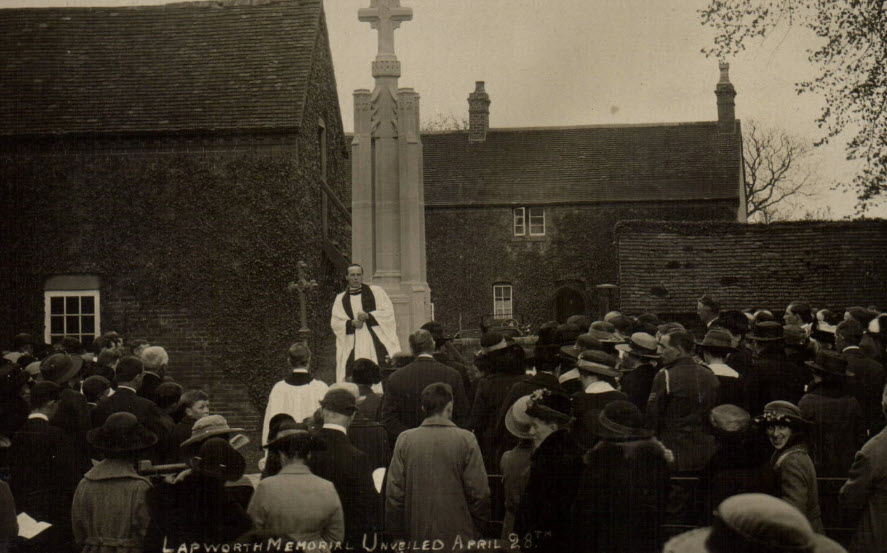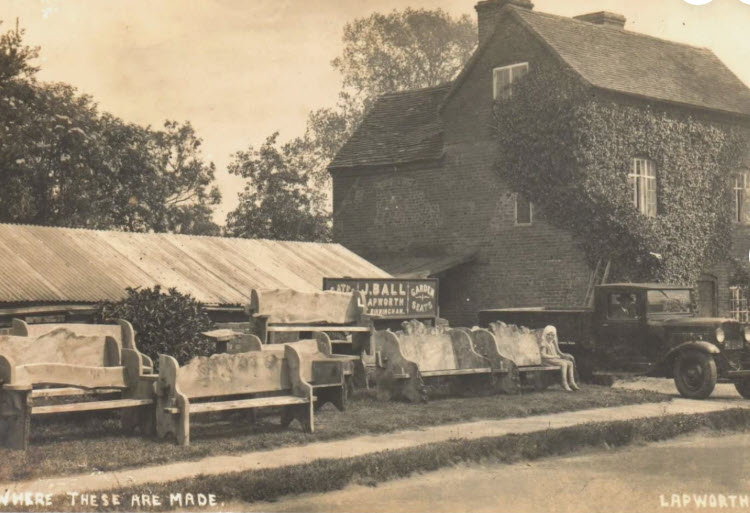

postcards on sale from yorkshirebidding
The History of Lapworth, Warwickshire
Lapworth is a charming village in Warwickshire with a rich history spanning over a millennium, from its Anglo-Saxon origins to its development as a modern rural community. Located approximately five kilometres north of Henley-in-Arden and situated between the A3400 and the Grand Union Canal, this village has witnessed significant historical transformations while maintaining its pastoral character.
Anglo-Saxon Origins and Medieval Foundations
The earliest recorded mention of Lapworth dates to AD 816, when the settlement appeared as ‘HLAPPAWURTHIN’ in an Anglo-Saxon document. At this time, the land forming the Saxon estate was gifted to the Bishops of Worcester by Ceonwilf, King of the Mercians. The name derives from Anglo-Saxon origins, with two possible interpretations: either as a compound of ‘Lap’ meaning ‘border’ or ‘boundary’ and ‘worth’ meaning ‘enclosure’, or alternatively from the personal name ‘Hlappa’ combined with ‘worthign’, meaning “Hlappa’s enclosure”.
The bishops retained possession of Lapworth until 1036, when it was transferred to Herlwin, who became lord of the manor. By the time of the Norman Domesday Survey in 1086, the settlement was recorded as ‘LAPEFORDE’, though this spelling was not repeated in later documents. The Domesday Book reveals that Lapworth was a modest settlement with half a hide of land, supporting one plough team and three villagers, with extensive woodland covering two leagues in length and one league in width.
Roman and Iron Age Heritage
Archaeological evidence reveals that Lapworth’s history extends even further back in time. Iron Age people built a fort in the area, and the Romans established pottery and tile kilns here. Significant Roman archaeological discoveries were made during M40 motorway construction in 1987-1988, when three Roman pottery kilns dating to the first half of the 2nd century were excavated. These kilns produced sandy reduced coarse wares and represented an important pottery production centre.
The Roman presence is further evidenced by substantial finds of over 30 kilograms of tile and Roman pottery scattered across the area. The kilns were of two distinct types, with some featuring permanent floors supported by pedestals and distinctive small stokeholes.
Medieval Development and Church History
Early in the 12th century (c. 1120), a simple church building consisting of a nave and chancel was constructed on higher ground at the heart of the Saxon settlement. This marked the beginning of St Mary the Virgin Church, which would evolve over the centuries into the remarkable structure visible today. The first recorded rector was Nicholas, serving around 1190 when Ralph Marshall was lord of the manor.
The 13th century brought significant expansion to the church, with the addition of the north chapel and north aisle early in the century, followed by the south aisle around 1250. In 1270, the advowson (right of appointment) passed from the lord of the manor to Merton College, Oxford, where it has remained ever since.
The 14th century was a period of considerable development. The chancel arch was raised, new windows were added, and a font was acquired. Notably, in 1373, a chantry chapel was endowed at the west end by Richard de Montfort and others. A detached north tower was built around 1380, and in 1398, the famous Lapworth Missal was completed, commissioned by local landowner Thomas Ashby.
The Catesby Connection and Gunpowder Plot Links
Lapworth holds a fascinating connection to one of England’s most notorious conspiracies. The Catesby family became associated with the village between 1418-1598 as lords of the manor. Most significantly, Robert Catesby, the mastermind of the Gunpowder Plot, was born in Lapworth around 1572. His father, William Catesby, had been a prominent figure in the village, and the family maintained strong local connections.
The Gunpowder Plot conspiracy had deep Warwickshire roots, with several plotters having connections to the county. Thomas Bates, described as a long-standing retainer of the Catesby family, was also born at Lapworth and lived in total devotion to Robert Catesby. Catesby Lane in the village is named after William Catesby, acknowledging this historical connection.
Tudor and Post-Medieval Period
The 16th century Reformation brought significant changes to Lapworth’s religious life. Mass altars and images were removed from the church, religious wall paintings were whitewashed over, and both chantry chapels were closed. The valuable Lapworth Missal was removed from the church during this period.
Despite these religious upheavals, the village continued to develop. Packwood House, a Tudor manor house with possible 15th-century origins, was built for William Featherstone in the late 16th century. This property, now owned by the National Trust, represents the architectural heritage of the post-medieval period and includes formal gardens dating from the mid-17th and early 18th centuries.
Industrial Age Transformation: Canals and Railways
The late 18th and early 19th centuries marked a revolutionary transformation for Lapworth with the arrival of canal transportation. The Stratford-upon-Avon Canal was authorised by Parliament in 1793, with construction beginning at Kings Norton. The northern section was completed to Kingswood (as Lapworth was then known for railway purposes) by 1802, connecting to the Warwick and Birmingham Canal.
Kingswood Junction became a crucial intersection point where the Stratford-upon-Avon Canal met the Grand Union Canal system. The full canal was finally opened to Stratford-upon-Avon on 24 June 1816, after costing £297,000 to build. This waterway brought commercial traffic through the village and contributed to its economic development.
The railway age further enhanced Lapworth’s connectivity. Lapworth railway station was established on the Chiltern line from London to Birmingham. Interestingly, the station was originally called Kingswood but was renamed Lapworth to avoid confusion with Kingswood station in Surrey.
19th and Early 20th Century Village Life
Detailed accounts from the 18th and 19th centuries reveal the character of rural life in Lapworth. The village was remote within the ancient Forest of Arden, with scattered settlement patterns typical of woodland clearance areas. By the late 19th century, Lapworth appeared on Ordnance Survey maps as a tiny hamlet with boundary hedges on the north, south, and western sides, surrounded by extensive ridge and furrow field systems.
Village life centered around agriculture, with local tradesmen serving the community. Residents recalled milk deliveries by horse-drawn float, oil delivery wagons for lamps and cooking stoves, and the impressive sight of brewers’ drays pulled by four heavy horses. The village school played an important role, with a progressive headmaster who taught boys to swim in the canal and provided garden plots for practical education.
A tragic event occurred on Ash Wednesday, 13 February 1907, when four children drowned after falling through ice on Spring Pit while sliding, despite warnings from their headmaster. This incident deeply affected the small community and remains part of local memory.
The Great War and Commemoration
World War I had a profound impact on Lapworth, as it did on communities across Britain. The village war memorial was unveiled in April 1920, commemorating 23 local men who died in the conflict. The memorial, designed by arts and crafts architect Edwin Francis Reynolds, originally featured a more elaborate design with four supporting pillars, but was struck by lightning in 1938 and only partially restored.
The memorial lists names including the Cranmer family, who lost three members: Christopher H, Oliver, and Thomas C Cranmer. Other fallen villagers included Frank Walter Barbery, the Birkett Barker brothers (A. Noel and Holroyd), and many others whose sacrifice is remembered in the churchyard.
Modern Development and Conservation
Following World War II, which added another 11 names to the village memorial, Lapworth began to experience the pressures of modern development while striving to maintain its rural character. The village benefits from excellent transport links, including the M40 motorway (Junction 16) and regular railway services to Birmingham, Solihull, Warwick, and London.
Contemporary Lapworth supports approximately 2,000 residents and maintains essential village facilities including a pre-school, primary school, GP surgery, village hall, shops, and several public houses – “The Boot,” “The Navigation,” and “The Punch Bowl”. The village’s location within Green Belt land has helped preserve its character while accommodating carefully planned residential development.
Natural and Cultural Heritage
Two National Trust properties near Lapworth showcase the area’s heritage: Baddesley Clinton, a medieval moated manor house, and Packwood House with its famous yew garden containing over 100 trees. These sites, along with the village’s position in the former Forest of Arden, provide extensive opportunities for countryside walks along canals and bridleways.
The Grand Union Canal and Stratford-upon-Avon Canal continue to define the village’s eastern boundary, now serving recreational rather than commercial purposes. The Lapworth flight of locks – 25 locks in total, with 18 in the main flight – remains an important feature for canal enthusiasts.
Legacy and Contemporary Character
Today’s Lapworth successfully balances its historical significance with modern residential needs. The village retains its essential character as a rural community while providing excellent connectivity to major urban centers. St Mary the Virgin Church remains central to village life, its medieval architecture telling the story of nearly nine centuries of continuous worship.
The Lapworth Local History Group actively preserves and shares the village’s rich heritage, ensuring that stories from Anglo-Saxon settlements to Roman pottery kilns, from Gunpowder Plot connections to canal-building achievements, remain accessible to future generations. This commitment to historical preservation, combined with thoughtful modern development, positions Lapworth as an exemplary English village that honors its past while embracing its future.
From its origins as a small Saxon settlement in the Forest of Arden to its current status as a sought-after village community, Lapworth’s history reflects the broader story of English rural development – demonstrating how geography, transportation, religion, and social change have shaped a single community over more than a thousand years.